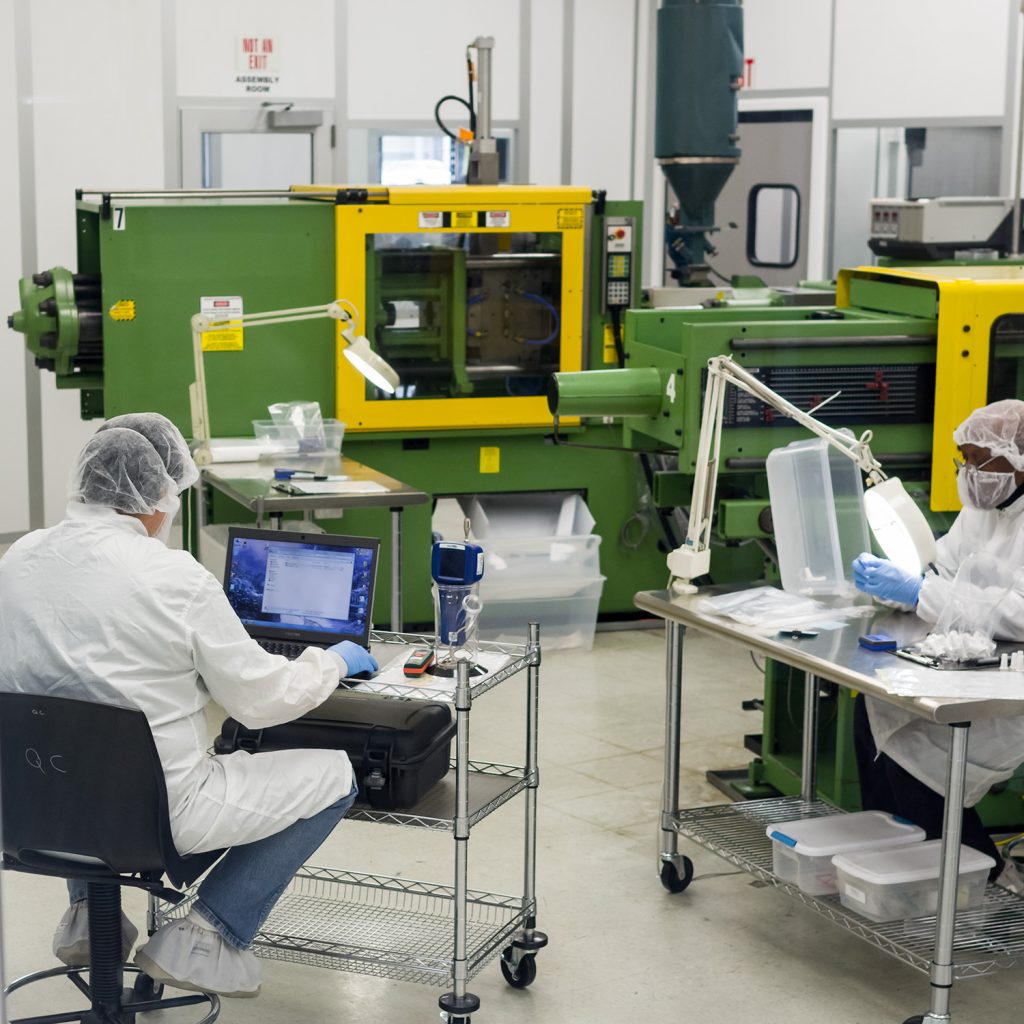The terms “QA” and “QC” are used frequently (and often interchangeably) in the plastics industry. But what do these terms actually mean? What is the role of each in delivering quality parts to your customers? In this post, we’ll demystify Quality Assurance and Control and explain how each plays an integral in your business.
Having visited thousands of processing facilities around the world, Routsis Training has found this is more than mere confusion over the terminology. In fact, it’s quite common to see so-called ‘Quality Assurance’ departments that are actually just performing ‘Quality Control’ duties.
Quality Control
ISO 9000 defines Quality Control as, ‘A part of quality management focused on fulfilling quality requirements.’ In practice, this process involves visually inspecting, measuring, and/or testing parts to ensure they meet the customer’s requirements.
Since inspecting every single part is time consuming, most Quality Control departments institute specific procedures designed to detect and isolate bad product, such as first piece approval and routine inspections. During this process, a sample of product is retained and then put through a pre-approved series of visual, dimensional, and/or physical tests.
The theory behind quality control is that if a routine sampling of product is good, the products manufactured between the samplings should also be good. Most manufacturers use these quality control measures to help ensure customer satisfaction.
Quality Assurance
According to ISO 9000, Quality Assurance is ‘A part of quality management focused on providing confidence that quality requirements will be fulfilled.’ This may sound the same at first. But here is the key difference: while QC focuses on verifying that acceptable product is being, QA focuses on verifying that a good process is being used to make acceptable product.
In plastics processing, there are many ways to make an acceptable product that will pass initial inspection using completely different processes. The long-term ramifications of product manufactured using a different process can be anything from basic part discoloration to catastrophic part failure.
Summary
Here is the best way to differentiate the roles of QA and QC: Quality Control focuses on part monitoring while Quality Assurance focuses on process monitoring. Remember: Your customer is expecting you to produce the same product with the same process each and every time. To accomplish this, you need to be using both QC and QA measures.
In practice. delivering consistent quality to your customers is a plant-wide initiate and not solely the purview of the QA and QC departments. Routsis Training offers extremely cost-effective in-house training for all production personnel.
Our Professional Certification Portals are an excellent tool for training and benchmarking your entire workforce. We offer Quality Certification tracks for Injection Molders, Blow Molders, as well as Single Screw and Twin Screw Extrusion.

0 Comments Leave a comment